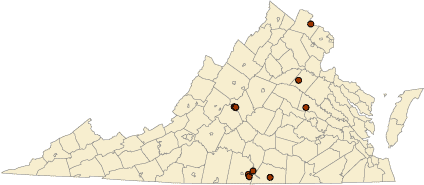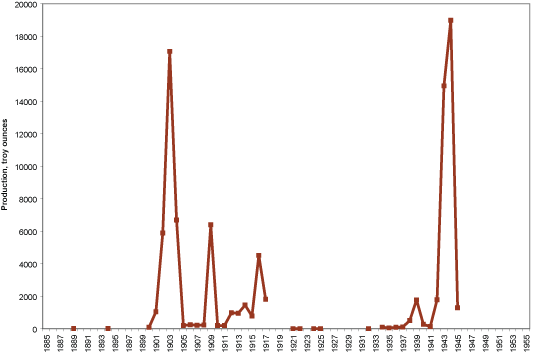
Silver is a soft, white metal, with the chemical symbol of Ag. It is ductile, malleable, and has the highest electrical and thermal conductivity of all metals. It is used in coins, jewelry, and tableware, and has many industrial applications.
Year of first production in Virginia: 1885 (first reported production)
Location of first production in Virginia: unknown.
First production attributable to a particular mine was the High Hill Mine, Halifax County, 1903.
Year of last production in Virginia: 1945
Location of last production in Virginia: unknown
Total cumulative production in Virginia: about 90,000 troy ounces
Current annual production in Virginia: none
Silver has been produced in Virginia primarily as a by-product of lead, zinc, copper and gold mining. Most of Virginia’s silver production has come from the Virgina District in Halifax County, the Mineral District in Louisa County, and mines in Prince William, Goochland, Spotsylvania, Orange and Buckingham counties. In Amherst County, an abandoned gold-silver mine was developed along a 14-inch wide altered, metallic sulfide mineralization zone. The host rock is granite and metamorphosed granite within the Precambrian Pedlar Complex, and the gold and silver seem to be associated with arsenopyrite veins.

Historical silver production in Virginia by year.
Selected References:
Penick, D. Allen, and Sweet, P. C., 1984, Gold-Silver Rediscovered in Old Amherst County Mine: Virginia Minerals, v. 30, n. 2, p.22-23.
Sweet, P. C., 1976, Silver in Virginia: Virginia Minerals, v. 22, n. 1, p. 9-11.
